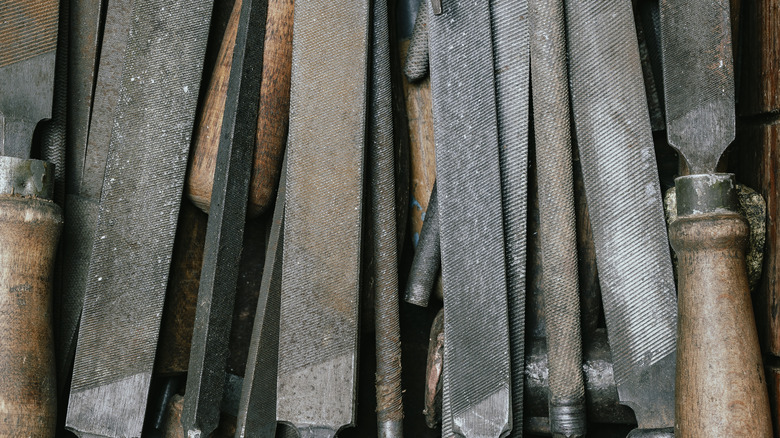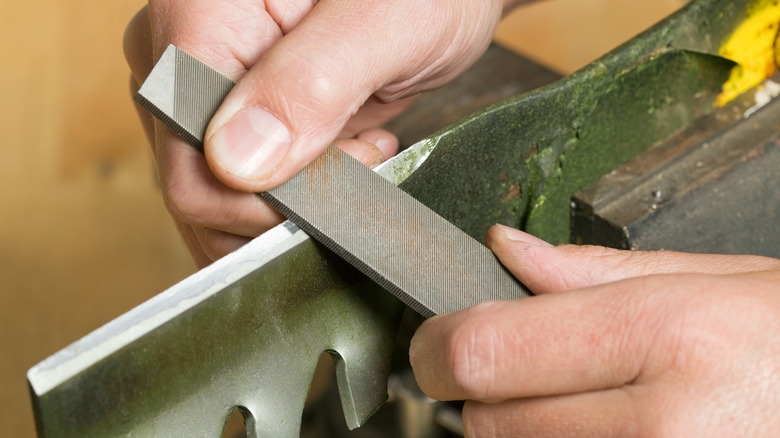Revive Your Rusty Metal Files With An Effective Way To Sharpen Them At Home
We may receive a commission on purchases made from links.
Whether you're an auto enthusiast, home metalworker, or just want to sharpen a dull shovel, a metal file is an indispensable tool. They don't cost much, and they can last for years. Unfortunately, the high carbon steel they're made from makes them prone to rust. This can clog the teeth and make them blunt. Luckily, you can revive rusty metal files and sharpen them without a great deal of effort.
As Inventor Eye demonstrates on their YouTube channel, vinegar is a very versatile cleaning tool, and its acidity is the key to this simple method for removing rust from files. Rust forms when the iron in metal is exposed to moisture in the air. Vinegar dissolves the rust, leaving behind a salt that is easy to clean off. First, it's a good idea to remove any surface dirt and grease so there's nothing blocking the vinegar from getting to the rust. Do this by adding dish soap to a bowl of water and spending a few minutes on the file with an old toothbrush.
Next, fill a shallow tray with enough vinegar to cover the file and lower it in to soak (remove the handle first if the file has one). Alternatively, cut the top off a soda bottle, fill, and stand the file in there. Be sure to wear latex or nitrile gloves, and keep the container with the file out of the reach of children.
A remarkable transformation for very little work
Over the next three or four days, the vinegar will loosen the rust and turn progressively darker. The acid then needs to be neutralized with a solution of baking soda and water. Remove the file from the vinegar and swirl it around in the new liquid for a minute. Then dry it with an old cloth, rubbing away from the handle so the material doesn't catch in the teeth.
At this stage, the file will often look almost new again and will have regained much of its sharpness. However, there may be a few small patches of rust left. If you want to be particularly thorough, getting rid of them is another of those great uses for WD40. Spray the length of the file and work on it with the tooth brush again to remove any particles left in the teeth. Turn it over and repeat on the other side. An even more effective method is to use a file card, such as the QWORK File Card. These are also great for removing bits of metal that get stuck in the teeth while you're working, so they are well worth a small investment.
Now, you can also use a flattened piece of copper pipe for even deeper cleaning by rubbing the soft metal into the grooves. While a neat hack, this is quite fussy and time-consuming, and using a file card should make the extra work unnecessary.

